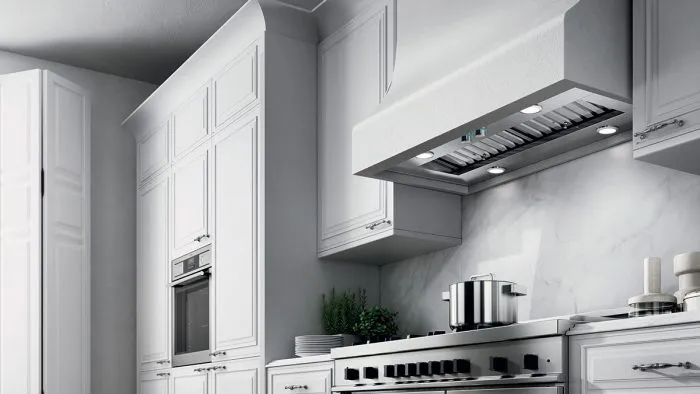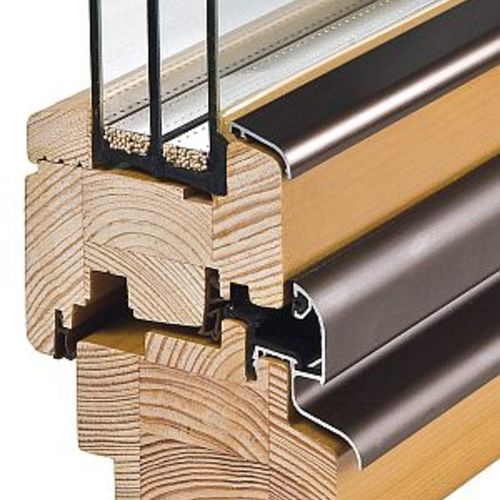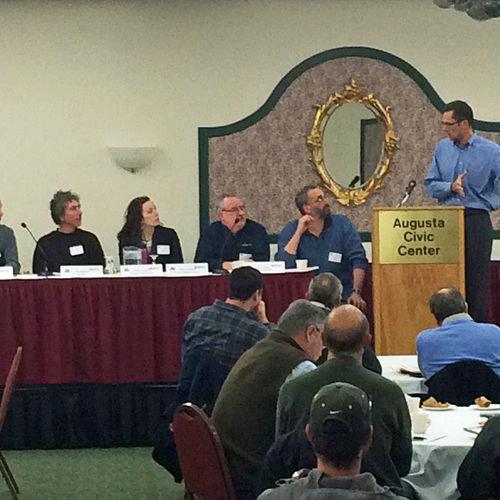
A code-minimum house is usually built from simple, relatively inexpensive components. In most of the U.S., that means components like 2×4 studs, OSB sheathing, Typar housewrap, double-glazed vinyl windows, Therma-tru doors, asphalt shingle roofing, and fiberglass insulation, for example. But if you are interested in high-performance homes, you’ll soon discover that some builders are spending a lot of money for high-quality building components.
Are these expensive building components—things like 2×6 or 2×8 studs, Zip-R sheathing, European air barrier membranes, triple-glazed windows, Passivhaus doors, metal roofing, spray polyurethane foam insulation, and Zehnder HRVs—worth the investment?
It’s a good question. Let’s see if we can come up with a few ways to try to answer it.
Prices have gone nuts
Any attempt to analyze this question has to assume that prices are stable. They’re not, and that complicates any attempt at analysis. If you delay the purchase of a certain building component for a few months, you may find that the price has risen 25%, changing the basis of your calculations. If you have your heart set on certain components manufactured in Germany, shipping delays may sink your dream.
So I’ll begin this discussion with a plea for readers to suspend their disbelief. Imagine a world where prices are stable, supply chains work, and the annual inflation rate hovers at about 2%. After we finish this fantasy analysis, we can close our storybook and provide real-world advice.
How big is your budget?
Every construction project has a budget. These days, most budgets are strained—so it’s harder than ever to justify expensive upgrades for building components.
If you are among the lucky few who can build a house to the highest standards of quality without regard to price, you will probably be tempted to specify the best possible…
Weekly Newsletter
Get building science and energy efficiency advice, plus special offers, in your inbox.

This article is only available to GBA Prime Members
Sign up for a free trial and get instant access to this article as well as GBA’s complete library of premium articles and construction details.
Start Free TrialAlready a member? Log in















14 Comments
This is good practical advice and good wisdom about some ways to approach thinking about it.
I wonder about the question of avoiding building as the lowest impact option. If you are one of 50 families in a region who need housing and want a single-family house, and there are 40 houses on the market, you could argue that 10 new houses are going to be built no matter what. If you buy one of the 40, the 10 that are built might be built using higher impact materials than what you could choose if you did a new build. The best choice for the climate would be to opt not to live in a single-family dwelling at all, but to opt for an apartment in a walkable downtown area, but if you can't be convinced to do that, and you have the motivation and resources to do a really low carbon build, that build might be the best choice.
Just make sure that all the contractors driving to the site are carpooling or driving small EVs charged from renewable sources.
Charlie,
You're right -- if a builder or a home buyer feels that there is no way to avoid a new construction project, it's obviously better to choose components that are manufactured with lower levels of CO2 releases than run-of-the-mill components. But every purchase of new materials comes at the cost of planetary degradation -- something that we need to remember.
"...for the next few decades, the most environmentally sound path is for green builders is to stop building altogether."
Martin, you may as well say "stop having children." I disagree. The most environmentally sound path is for non-green builders to stop building altogether, or get with the program and get educated. The initial statement comes across as antithetical to the purpose and audience of this site. I'd sooner the readers here continue to shift market demand for the better, especially in an industry so plagued by status quo inertia.
People need housing. People need buildings; they are going to be built regardless. Better that they build it right. I have to give the benefit of the doubt that they're building for the right reasons.
Creative Destruction,
Right now, most economic activity hurts the planet -- especially when the economic activity involves purchasing almost anything that was recently manufactured. That's a tough fact to face, but it is a fact.
Moreover, if we are comparing the damage to the planet caused by a new $150,000 house with run-of-the-mill energy performance, versus a new $160,000 house that will save $12,000 in energy costs over the next 30 years, the lousy house is better for the planet, in most cases, than the energy-saving house. That's because of the front-loading of the CO2 releases associated with manufacturing. Those releases are occurring at a time when our planet is particularly vulnerable.
There are exceptions to these generalizations, of course, and the exceptions have to do with variations in CO2 releases associated with each $1,000 of expenditure. But in rough terms, these generalizations are a useful way to guide our thinking.
Clearly R-60 cellulose is better for the planet than R-60 of closed-cell spray foam. But it would be better for the planet if green builders kept their pickup trucks parked near their house and went for a hike in the woods or a bike ride to the beach, instead of driving their pickup truck to a job site to finish their next "green" construction project.
An interesting question is: do we need more housing?
The traditional answer is that (as evidenced by the affordable housing crisis and demand-short market conditions) we need more badly. But what about demographic trends, population growth (or lack thereof) and other such measures? What is creating the high demand and low supply? Is the supply too low, too much, or just about right given the big picture?
Answers to these questions (of which I don't know) should inform whether 'building new houses' is not only green or not, but necessary to shelter people struggling to find housing. Any leads?
MaineTyler,
Virtually all researchers agree that the U.S. needs more housing. There are political issues that affect how you might analyze the best solutions to our current housing shortage, however. Radical reformers might suggest that we make the ownership of second or third homes cripplingly expensive through tax increases, and that our government use the tax revenue generated by this proposal to subsidize low-income housing projects.
Or tax law changes could discourage the construction of single-family homes and encourage the construction of multifamily homes.
But hey -- such proposed solutions will be labeled un-American or socialist, so why dream?
Really excited to see how putting "contractor shall carpool or drive small EV's charged from renewable resources" in our general notes goes ;)
That said, I'm looking forward to the first time I see a contractor roll up in a shiny new Ford Lightning.
My first construction job (in 1974) was as a roofer. I bicycled to work, with my toolbox strapped to the back of the bike.
Of course my boss had a truck, to bring the ladders and bundles of shingles to the job sites.
As a reminder, the next best option to not building a new house is to build multifamily homes where the use of land and building material (concrete in particular) per occupant can be a fraction of what’s required to build a detached single-family home.
Generally speaking, it’s also a requirement to create an environment that doesn’t rely on single-occupancy trucks and SUVs for everyday transportation. Sadly, the very unsustainable practice of single-family home + 2 SUV’s in the garage has become the default American dream and there are no clear evidences that it’s about to change.
https://jalopnik.com/trucks-and-suvs-are-now-over-80-percent-of-new-car-sale-1848427797
Vivian,
You're right. The greenest way to live is to live in an older multifamily building in a walkable neighborhood -- near shops, schools, and a bus stop or subway stop.
The thing is that young people will start out that way living in the cities, renting older apartments in trendy neighborhoods, taking bus or Uber, going to all the bars and restaurants and such. Then they marry, or that first baby comes, and then they don't want to stay here anymore. Now, they want the 3000 sq. ft. house, two SUV's and all the other "trappings" that come along with that. I see it happen all the time. Typical reasons are schools, crime and high taxes, and of course older overpriced housing. Some stay, but only the ones who can afford buying an older home in a trendy or quiet area that is expensive and often need extensive work or to be gutted and rebuilt.
Everyone's lifestyle is different. Many people just want their own house that is theirs. Their own space, a yard, driveway, garage and the freedom to decorate their place and have their pets as they choose. They don't want someone above or below them, they don't want to deal with a landlord or a condo board and their rules. People with certain hobbies like having a workshop, working on vehicles, a large home media room, or certain home businesses will likely always want their own individual home.
I saw that product placement. For shame. Either the post should be a disclosed ad, or especially given the subject, be fully generic (studs, not the brand name of some actual product).
Several,
Choosing photos to illustrate an article is not an easy task, especially for bloggers like me who aren't given a fat art budget to work with.
I can assure you that:
(1) The choice of the photo of a very expensive HRV installation had nothing to do with a product placement deal -- there was no such deal, and
(2) Even a cursory reading of my article should convince you that I am not advocating in favor of the installation of Zehnder HRVs. On the contrary, I am letting people know that the decision to install a $10,000 HRV system is usually a mistake -- hardly a message beneficial to Zehnder.
Of course one of the simplest ways to reduce the cost of a new single family home, while also reducing environmental impacts and energy costs is to build smaller. Used to be we would build a 1500 SF home for a family of four, now it is not uncommon to see a 3000 SF home just for a retired couple (and lots of homes much larger than that). Homes and cars need to go on a weight loss diet now.
Had a client once who was very upset that his HOA only allowed him to build a maximum of a 10,000 SF home with a four car garage. Crazy!
Log in or become a member to post a comment.
Sign up Log in